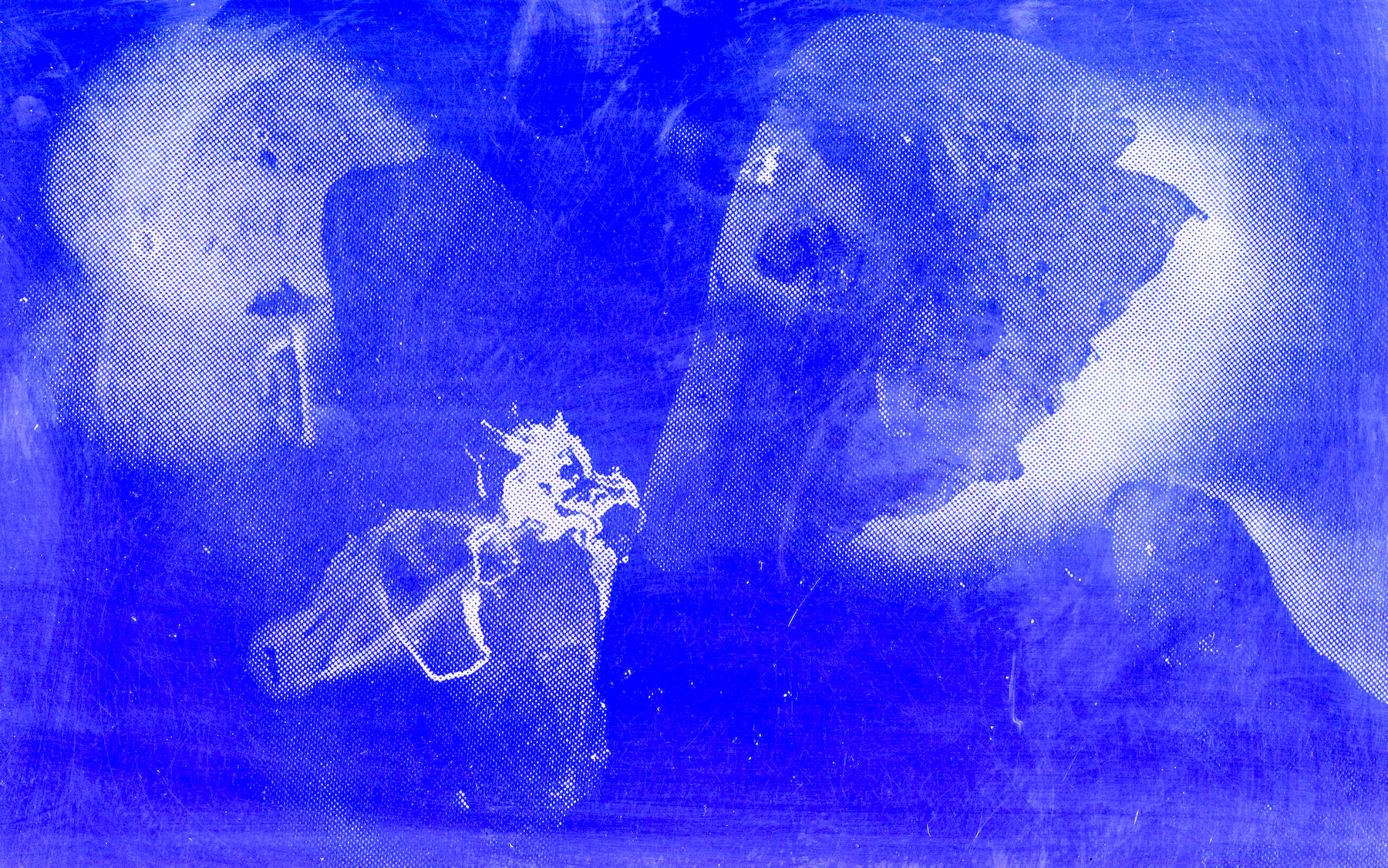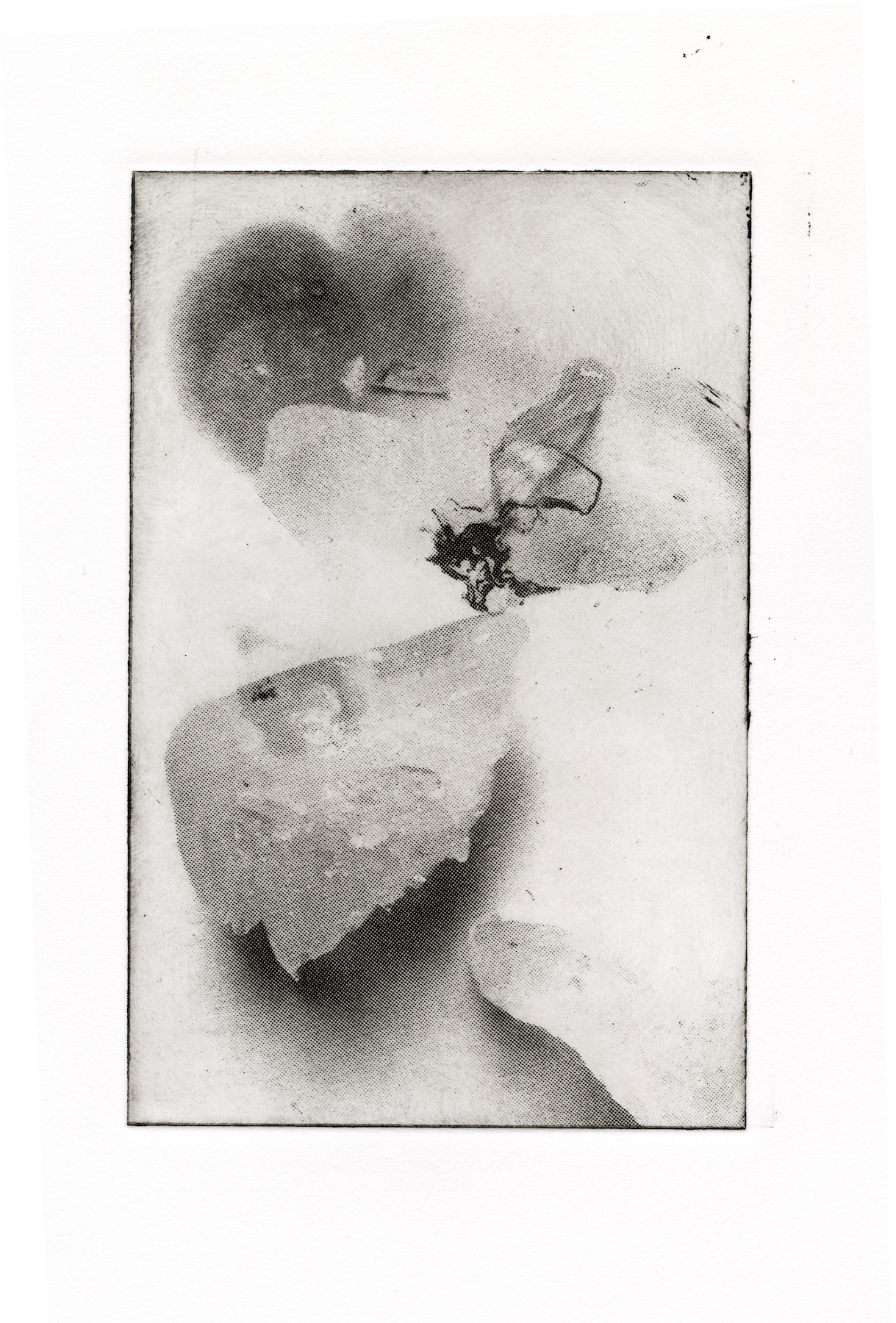


 June 24th, 2021
June 24th, 2021
 4:41 min read
4:41 min read  1289 words
1289 words
Probably it’s because of the silver grey of the etched areas, that it stands out so loudly. That hydro-coat blue.
I never imagined that an artificial blue could be that neon bright outside of the digital-meta-space of the screen.
The vivid part of developing the plate is when this mesmerising blue becomes liquid and you’re there, brushing it away to reveal a ghost of the image through heavy clouds of neon fog.

The rest is simple and efficient. Etching itself takes minutes,and the inking is a more than familiar process. I find that in photo-etching there is a beautifully weird balance between the manufactured and the artistic. It’s neither as fast and efficient as screen-printing, noras controlled and flat. There is texture and a comforting predictability that creates delicious aftertastes of the process. Peeling the soft paper from the plate feels like unwrapping a gift each time. You have no clue what’s inside – maybe the gift is terrible (accidents are not always “happy”), but the sweet excitement of expectation is there regardless.
And then, if you find yourself in the trap of printmaking, the danger is that it’s impossible to stop. It feel like an endless pot of opportunities in the creativity of chemistry and sometimes bizarre decision making (let’s not forget how lithography was invented).
But here I, as an RCA student and an amateur with only a minimal understanding of printmaking, will finish these obsessive little scribbles. Printmaking, however, I cannot.
